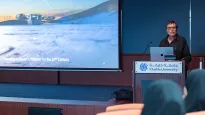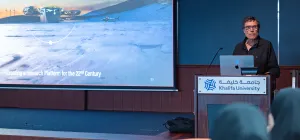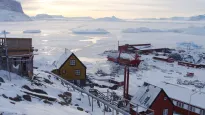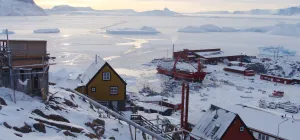A Busy Holiday Season
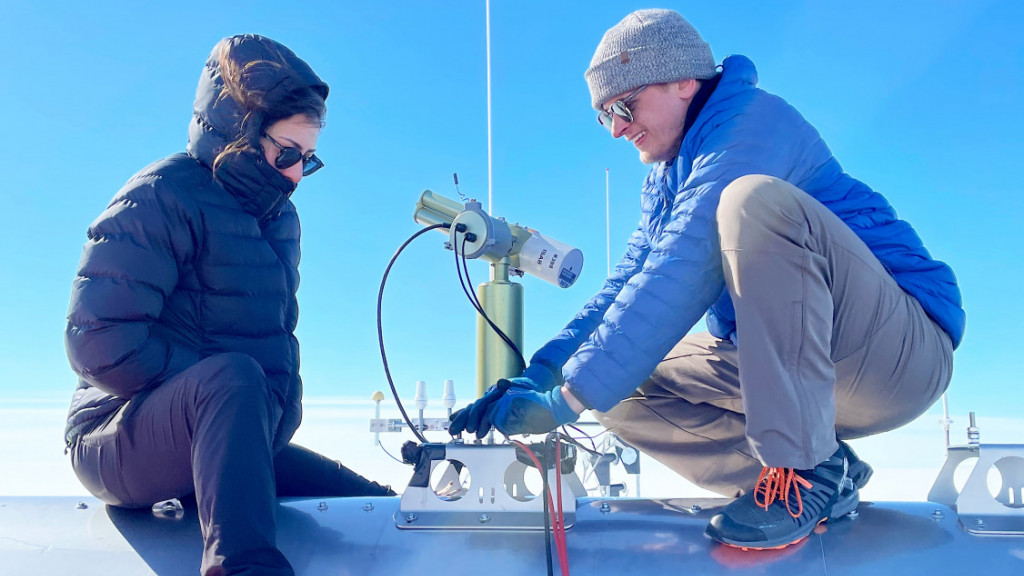
The season got into full swing this past week following the arrival of the scientists and new crew.
Welcome to Antarctica!
Two days of mandatory orientation and training welcomed the newcomers before work began in earnest.
One of the first things newcomers must do is receive extensive training on how to administer first aid, protect themselves against the dangers of polar regions, how to drive a snowmobile, and other necessary skills for daily life in Antarctica. An important part of this general training is and exercise on how to rescue someone from a crevasse should someone ever have the misfortune of ever falling into one. Extra Information about the new Antarctic Specially Protected Areas (ASPA; location and rules) avian flu HPAI H5N1 and the code of conduct that visitors of PEA are required to follow are also provided.
The newcomers spent the majority of two days learning these important skills from expert field guides and the station doctor, Mathieu Pasquier. Now everyone is fully prepared to face the elements in Antarctica.
The newcomers also spent Christmas in Antarctica. For many of them, it was the first time they spent the holiday here, away from their loved ones. At least they were guaranteed a white Christmas! A Christmas Eve storm left mounds of snow at the station and on Christmas Day many people pitched in with shovels to remove the excess snow that had accumulated overnight. This year there has been more snow accumulation at the station than usual.
Station cook Thomas Duconseille served up a memorable Christmas Dinner on December 24th, which included a wonderful three-course meal. This was accompanied by ample cheer and time for scientists and state crew to socialise.
Science and logistics
Work began on scientific projects in earnest this week. Quinten Vanhellemont from the Royal Belgian Institute of Natural Sciences (RBINS) has been installing the HYPSTAR radiometer to monitor solar radiation and ground reflectivity in the vicinity of the station for the ExpoSoils project. He has also installed two upward looking cameras for the SKYCAM project, a University of Maryland and NASA Goddard-led research project looking to better understand how clouds influence remote sensing data and help enhance current cloud detection and characterization methods above Princess Elisabeth Antarctica station.
On Tuesday the three members of the 4SAT project (Site Survey for possible Space Situational Awarness Telescope), which is looking to track satellites and space junk, headed to Vesthaugen Nunatak about 30 km north of the station to survey this area as a potential location for a possible future telescope the project would like to build. In the coming weeks, they also plan to check four or five additional locations as potential places to install the permanent telescope.
With help from IPF crew, two researchers from the PASPARTOUT project, Sibylle Boxho from the Université Libre de Bruxelles (ULB) and Dr. Paula Lamprea Pineda from UGent have been installing monitoring equipment on the roof of the Princess Elisabeth Antarctica, such as an auto-sampler which will collect air throughout the year to determine pollutants present in the atmosphere. This will allow scientists to better understand meteorological conditions influencing the local environment and from where these pollutants originate.
In the coming weeks Sibylle and Paula will head in the direction of the coast with one of our experienced polar field guides, Manu, there they will dig a trench in the snow, some 2 meters deep, 1.5 meters wide and 3-4 meters in length to take snow samples. They will also install another atmospheric particle sampler. They plan to be in the field for two straight weeks as they dig, sample, and collect snow and particles required to carry out their analysis.
The cargo ship is scheduled to arrive and begin unloading on the ice shelf on January 1st. Alain and four additional members of the IPF team (Tim, Jacques, Yann, and Simeon) are leaving on Saturday for their third traverse of the season, taking additional waste from the station that has accumulated over the years.
This year, with record-low sea ice cover around Antarctica, navigating the sea ice surrounding the continent is expected to be rather easy for the cargo ship. While this is good for logistics, it’s not necessarily good for the climate, nor the wildlife that populates the Southern Ocean, as certain animals are dependent on specific ice conditions to feed, breed and grow.
A group of Chinese researchers working on the RINGS project will arrive in the coming days and spend one night at Princess Elisabeth Antarctica before taking off to do the radar transects from the Chinese Zhongshan station (in Prydz Bay) to PEA on a round trip. The goal of their project is to map coastal bedrock topography and investigate the thickness of the ice, which is made possible by the advanced radar system attached to the underbelly of the airplane. Two additional transect flights from PEA to Prydz Bay are planned later in January.
All the while at the station, work continues on installing the new water treatment system, regular maintenance on the wind turbines has been done, and the solar panel platform has been cleared ofo snow and ice.
More guests
On the evening of December 25th, an additional flight filled with the remaining cargo that was left at Ultima Airfield last week was transported to the station by the Ken Boreck air crew. In addition they brought with them seven passengers that were headed to Bharati research station, a permanent Indian base. The seven passengers and four flight crew members spent the night. The following evening at 9:30pm local time they departed. It’s roughly an 8 hour flight in the DC-3 from Princess Elisabeth to the Indian station – nearly 2,200 kilometres away.
Station engineers Aymar de Lichtervelde and Nicolas Herinckx gave a special tour of the station’s energy production and water treatment facilities to the guests, who were eager to learn about the sustainable nature of our station and the possibility of incorporating similar technologies at their own base.
The New Year is approaching and we’re approaching the midpoint of the season. Stay tuned as the science projects begin to pick up steam and work around the station begins to be finalised. There’s still lots more to accomplish in 2024!
Download


















